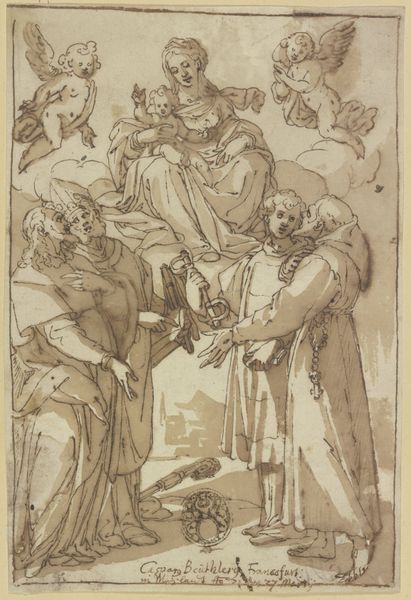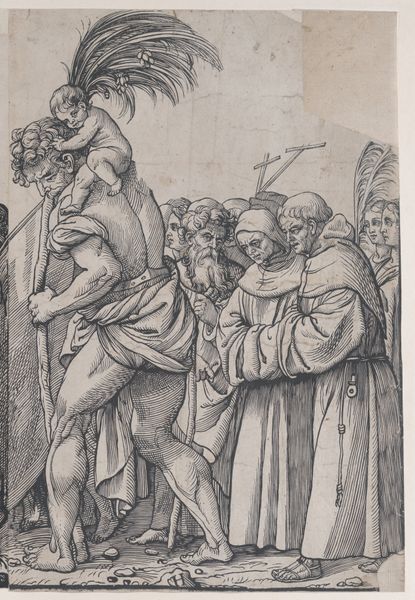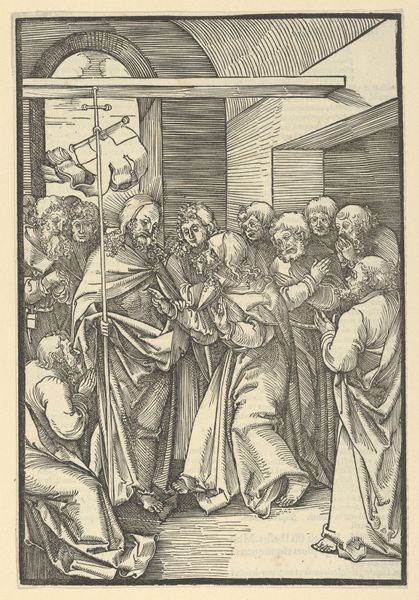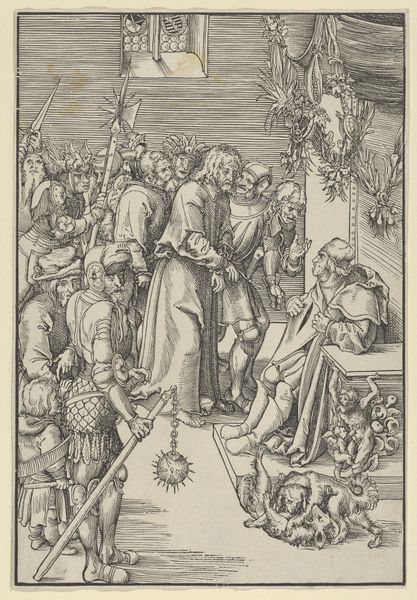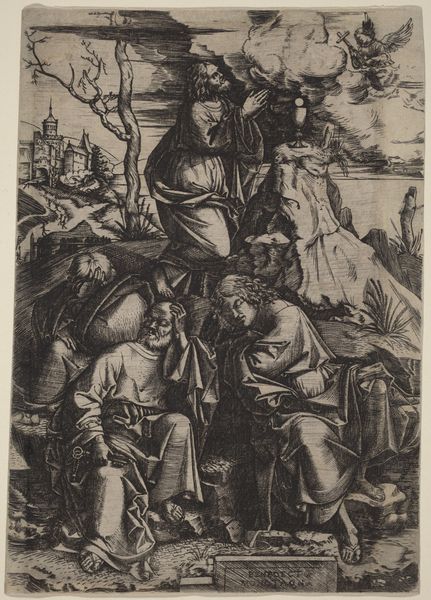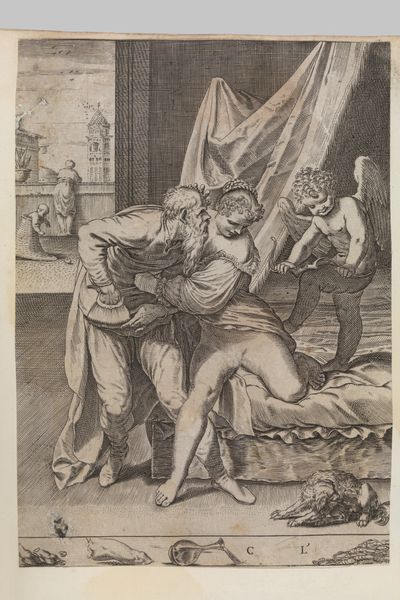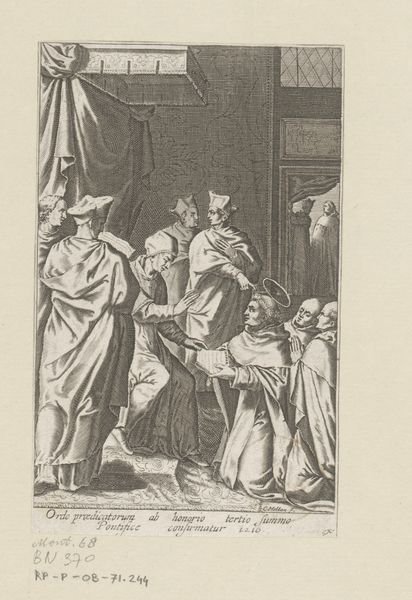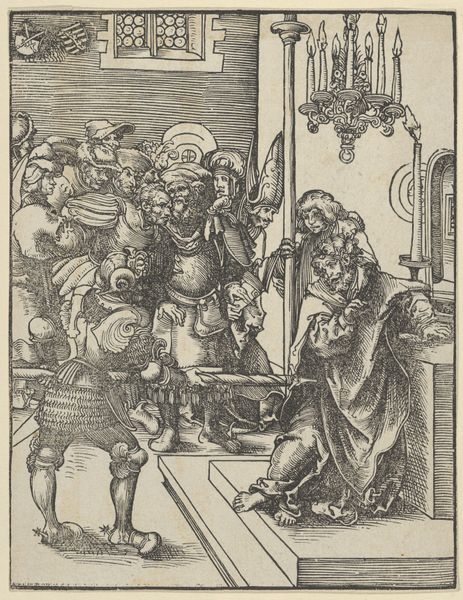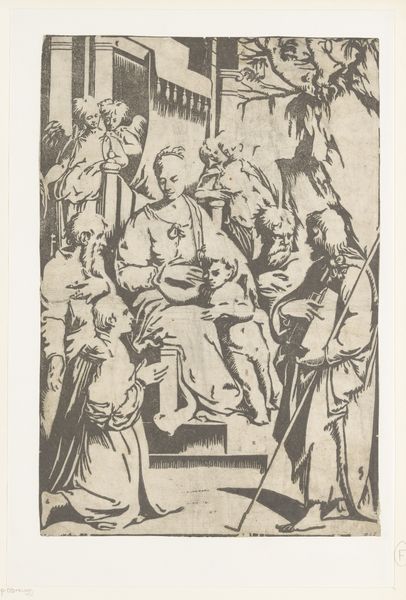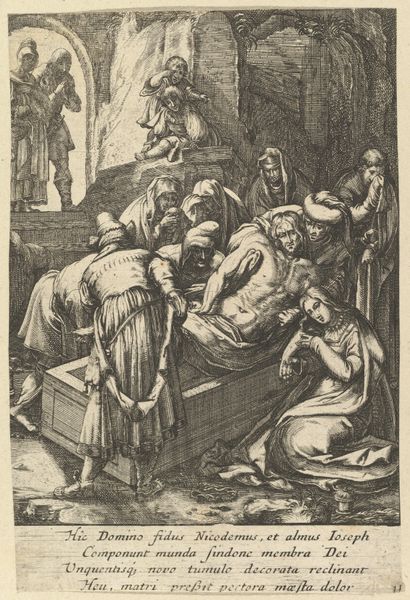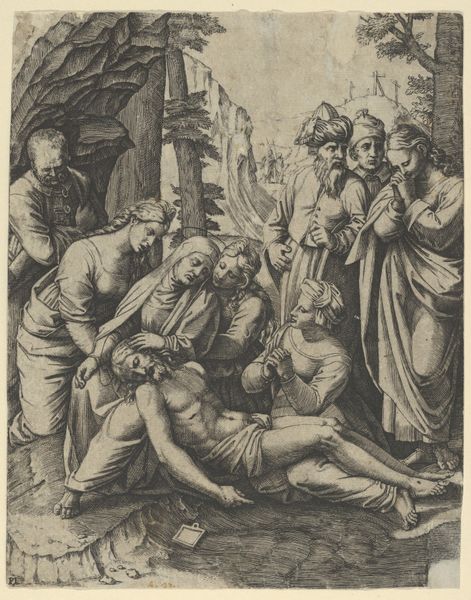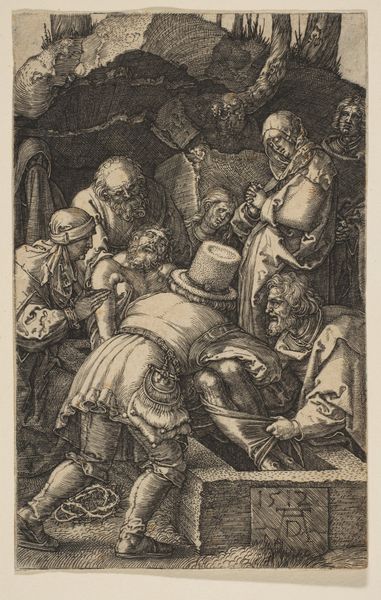
Reproductie van het eerste deel van de prentreeks De Triomf van Christus naar Joos Lambrecht 1857 - 1875
0:00
0:00
lithograph, print, woodblock-print, woodcut, engraving
#
portrait
#
medieval
#
narrative-art
#
lithograph
# print
#
figuration
#
11_renaissance
#
woodblock-print
#
woodcut
#
line
#
history-painting
#
engraving
Dimensions: height 446 mm, width 318 mm
Copyright: Rijks Museum: Open Domain
Editor: This is a reproduction of the first part of a print series called "The Triumph of Christ," after Joos Lambrecht, dating from sometime between 1857 and 1875. It seems to be some kind of lithograph, maybe even a woodcut or engraving. The linear quality gives it a unique medieval aesthetic. How do you interpret the visual narrative presented here, and what elements stand out to you? Curator: The linear style immediately pulls me towards its connection to social power structures within art and reproduction, especially how they amplify certain ideologies and downplay others. We must understand the original intent and subsequent reinterpretations as ideological projects. Do you notice how certain figures are rendered with more care than others? Editor: I do see that, yes. The figures in the foreground, especially the muscular man carrying a child on his shoulders, have a lot more detail compared to those in the background. Curator: Exactly! It forces us to consider the politics embedded within artistic representation. Who gets centered, who is marginalized, and what historical forces contribute to these visual hierarchies? Is it just about skill, or something else entirely? How might it connect to contemporary conversations around whose stories get told, and by whom? Editor: That's a great point! It makes me think about how even reproductions can perpetuate existing power dynamics. I had initially seen this as a purely religious scene, but now I see a narrative about power and representation playing out. Curator: Precisely. Engaging with this work through an intersectional lens opens avenues for critiquing dominant narratives, even when those narratives appear in religious art of the past. This reminds us that even art carries societal power that we can understand and hopefully dismantle through education. Editor: This has really opened my eyes to how historical context and critical theory can reshape how we view even seemingly straightforward religious artworks. I'll never look at a reproduction the same way again. Curator: Wonderful! That's exactly why art history can become a powerful tool for enacting social change, helping us uncover power that might have been missed at first glance.
Comments
No comments
Be the first to comment and join the conversation on the ultimate creative platform.
